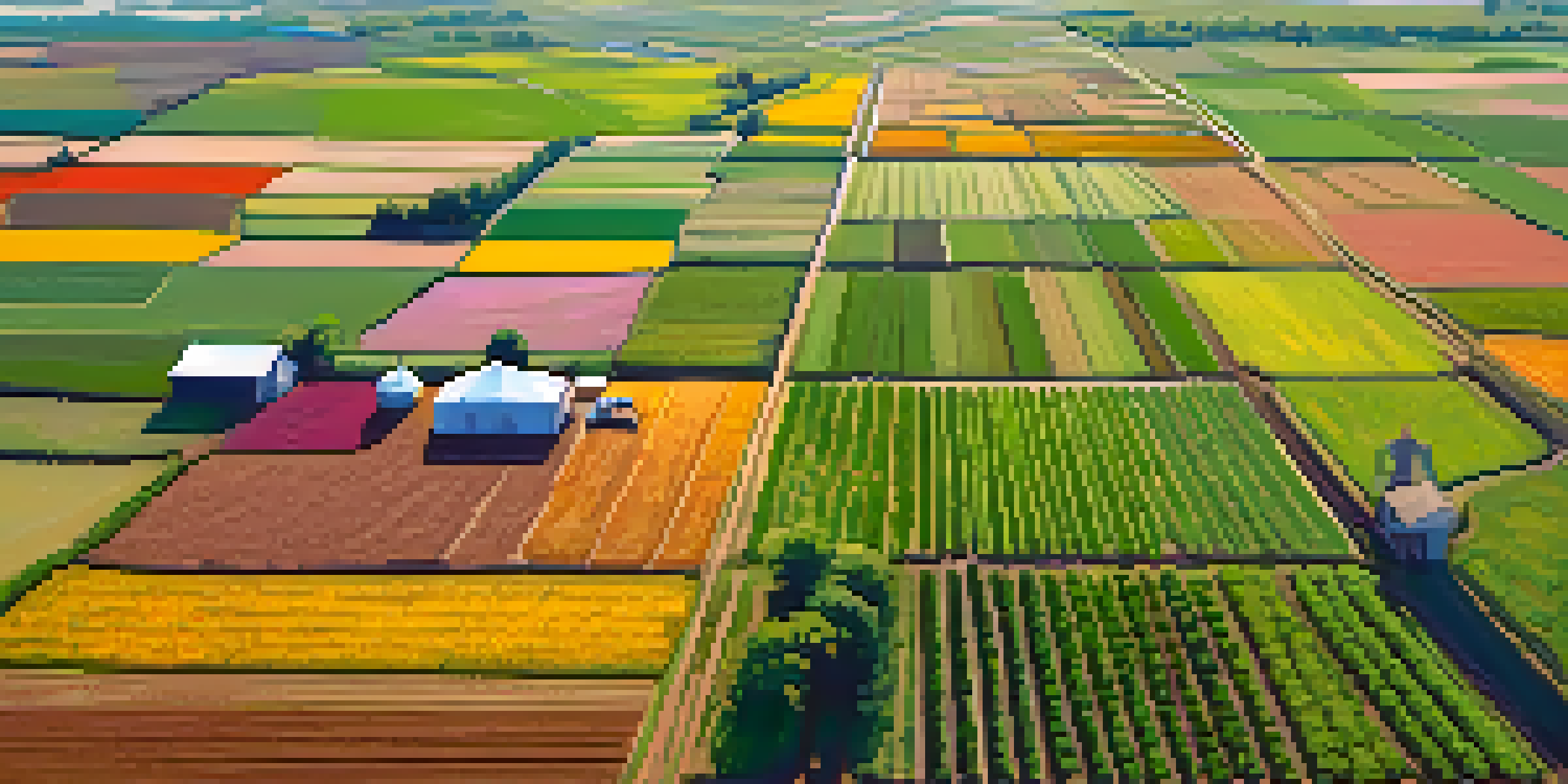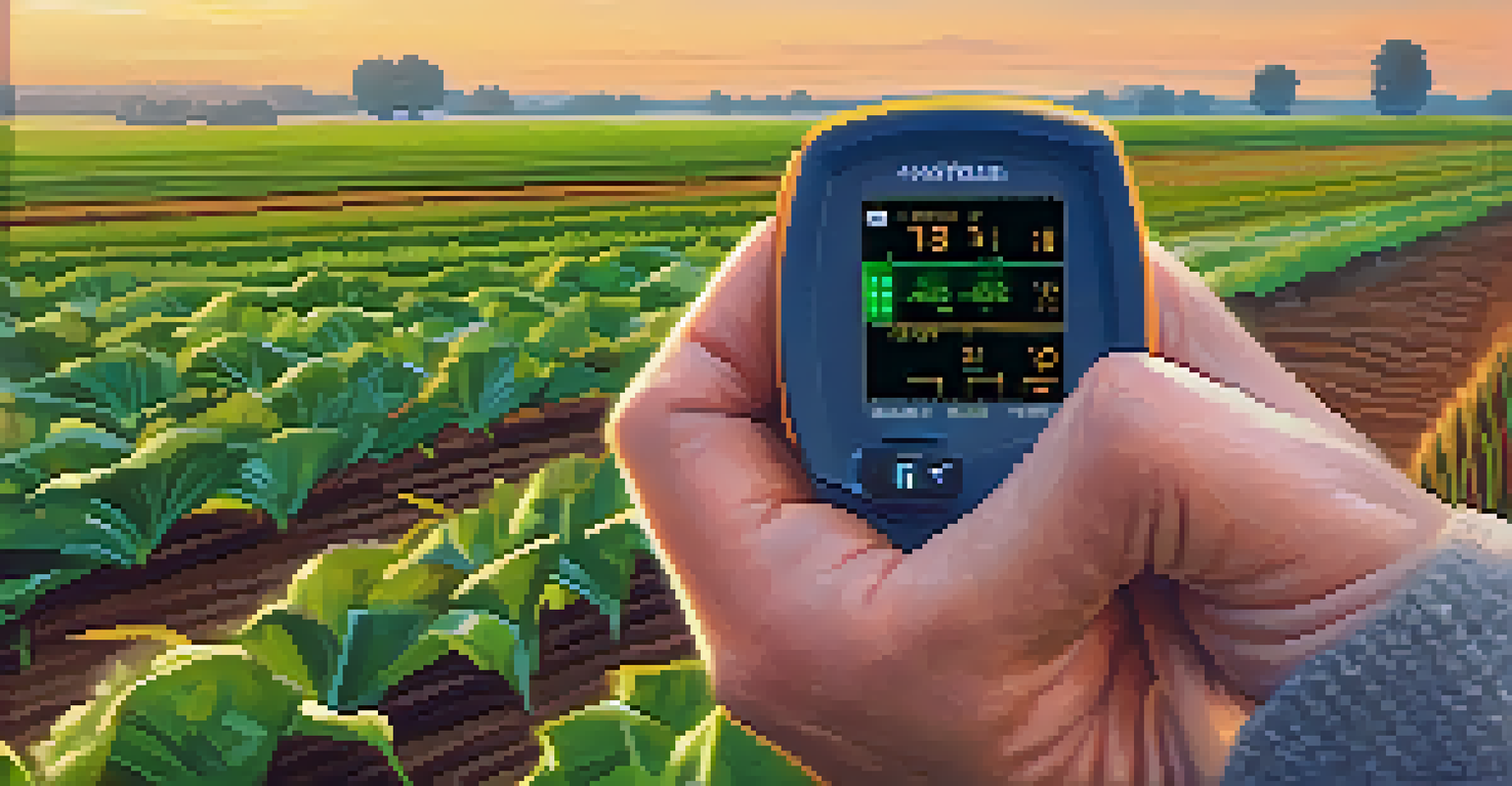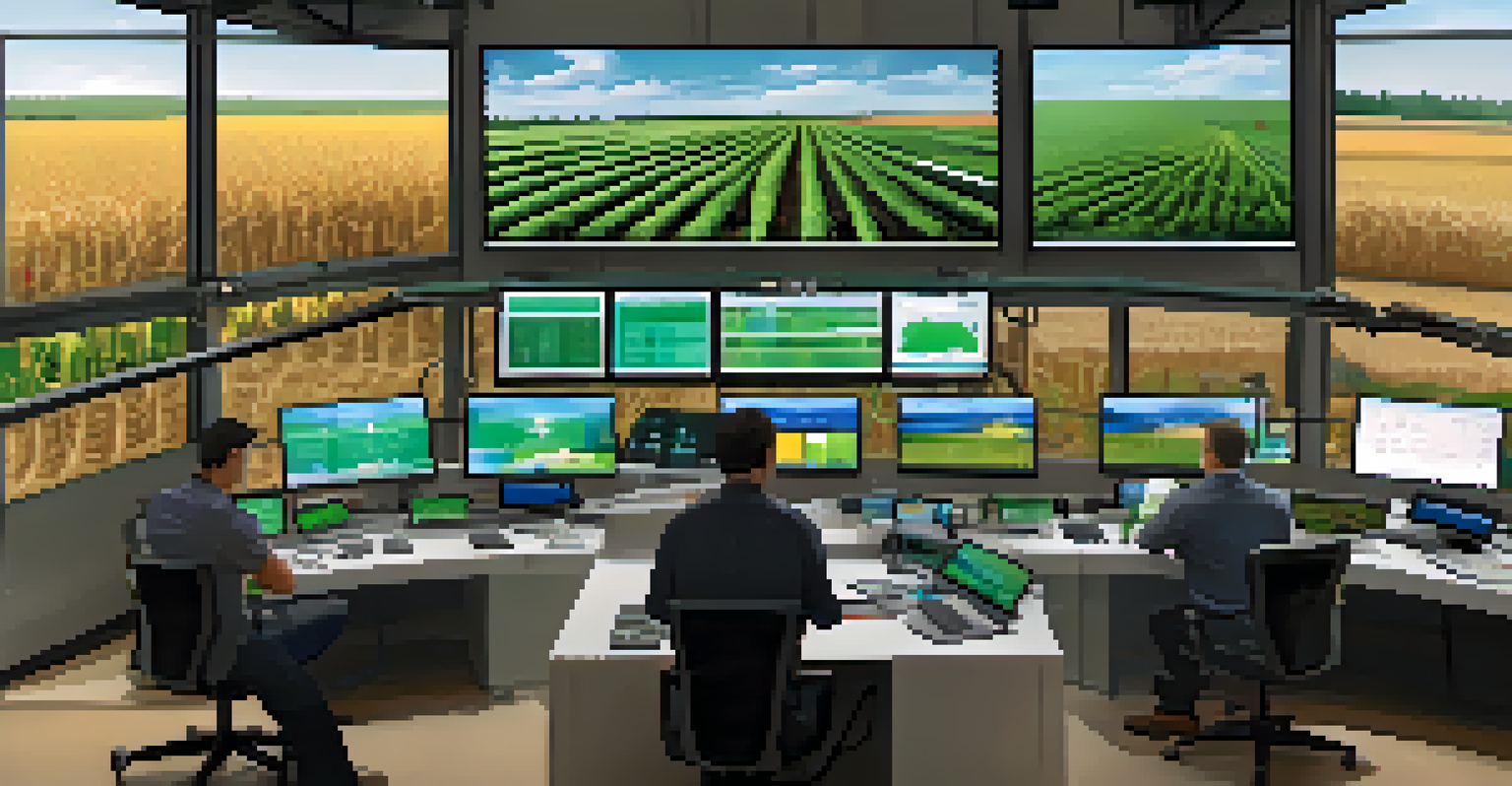Smart Farming: IoT Technologies in Food Plant Cultivation

Understanding Smart Farming and Its Importance
Smart farming refers to the integration of technology into agricultural practices. By utilizing tools like sensors, drones, and data analytics, farmers can optimize their productivity and efficiency. This shift is crucial as it addresses the growing global demand for food while minimizing the environmental impact.
The future of agriculture is not about the land; it's about the data.
With the world's population projected to reach nearly 10 billion by 2050, smart farming offers a sustainable solution. It enables the cultivation of crops with reduced resource use, such as water and fertilizers. This technology not only increases yield but also ensures that farming remains viable for generations to come.
Moreover, smart farming promotes resilience against climate change. By using real-time data, farmers can make informed decisions about planting and harvesting. This adaptability is essential for maintaining food security in an unpredictable climate.
The Role of IoT in Agricultural Practices
The Internet of Things (IoT) is revolutionizing agriculture by connecting devices and enabling data sharing. In a farm setting, various sensors can monitor soil moisture, temperature, and crop health, providing farmers with valuable insights. This data-driven approach is transforming how decisions are made in food cultivation.

For example, a farmer can use soil moisture sensors to determine the optimal time for irrigation, conserving water and improving crop health. This real-time feedback loop allows for precision farming, where resources are allocated based on actual needs rather than estimates. As a result, farmers can achieve better yields and lower operational costs.
Smart Farming Boosts Efficiency
Integrating technology like IoT enables farmers to optimize productivity and resource use, addressing both food demand and environmental concerns.
Additionally, IoT devices can alert farmers to potential issues, such as pest infestations or disease outbreaks, before they escalate. This proactive approach not only saves time and money but also enhances the overall quality of the produce.
Key IoT Technologies Used in Smart Farming
Several IoT technologies are making waves in smart farming, including drones, soil sensors, and GPS technology. Drones, for instance, can conduct aerial surveys to assess crop health and monitor field conditions. This bird's-eye view helps farmers identify issues that may not be visible from the ground.
Technology is best when it brings people together.
Soil sensors play a critical role by providing real-time data on soil conditions. Farmers can understand nutrient levels, moisture content, and pH, which informs their fertilization and watering strategies. This targeted approach ensures that crops receive exactly what they need to thrive.
GPS technology further enhances precision farming by enabling accurate mapping and field navigation. Farmers can optimize planting patterns and track equipment usage, leading to increased efficiency. These technologies work together to create a comprehensive system that supports sustainable farming practices.
Benefits of Implementing IoT in Farming
Implementing IoT technologies in farming offers numerous benefits, including increased efficiency and productivity. By automating processes and providing real-time insights, farmers can make smarter decisions. This not only boosts yield but also reduces waste, contributing to a more sustainable agricultural system.
Another significant advantage is cost savings. With precise data at their fingertips, farmers can optimize resource use, such as water and fertilizers, leading to lower operational costs. This financial relief is crucial for small farmers who often operate on tight budgets.
IoT Enhances Decision Making
Real-time data from IoT devices allows farmers to make informed decisions about irrigation, pest control, and crop management.
Moreover, IoT technologies enhance crop quality and safety. By monitoring conditions closely, farmers can ensure that their produce meets safety standards and consumer expectations. This focus on quality can create a more trustworthy relationship between farmers and consumers.
Challenges of Adopting IoT in Agriculture
Despite the many advantages of IoT in agriculture, there are challenges to consider. One major hurdle is the initial investment required to implement these technologies. For many farmers, especially smallholders, the cost of sensors, drones, and software can be prohibitive.
Additionally, there is a need for proper training and understanding of these technologies. Farmers must be equipped with the knowledge to interpret data and apply it effectively. Without this skill set, the potential benefits of IoT may remain untapped.
Finally, issues related to data privacy and security must be addressed. As farming becomes increasingly digitized, the risk of cyber threats grows. Protecting sensitive information is crucial for maintaining trust and ensuring the long-term success of smart farming practices.
Future Trends in Smart Farming Technologies
The future of smart farming looks promising, with emerging technologies poised to further enhance agricultural practices. Innovations such as artificial intelligence and machine learning are increasingly being integrated into IoT systems. These technologies can analyze vast amounts of data, providing insights that were previously unimaginable.
For instance, AI algorithms can predict crop yields based on historical data and current conditions, helping farmers make informed decisions about planting and resource allocation. This predictive capability can lead to more efficient use of inputs and better overall farm management.
Challenges in IoT Adoption
Despite its benefits, the high initial investment and need for technical training present significant challenges for farmers adopting IoT technologies.
As smart farming continues to evolve, we can also expect greater collaboration between farmers and technology providers. This partnership will drive innovation and ensure that solutions are tailored to the specific needs of the agricultural sector, paving the way for a more sustainable future.
Real-World Examples of IoT in Smart Farming
Many farmers around the world are already reaping the benefits of IoT technologies. For example, a vineyard in California uses sensors to monitor soil moisture levels, optimizing irrigation and enhancing grape quality. This data-driven approach has significantly improved both yield and flavor profiles, making the wine more desirable.
In another instance, a smart farm in the Netherlands employs drones to monitor crop health and yield predictions. By using aerial imagery, the farmers can identify areas that need attention, allowing them to address issues before they escalate. This proactive strategy has led to better resource management and reduced waste.

These examples illustrate the transformative power of IoT in agriculture, showcasing how technology can enhance traditional farming practices. As more farmers adopt these innovations, we can expect a significant shift in how food is cultivated and managed globally.